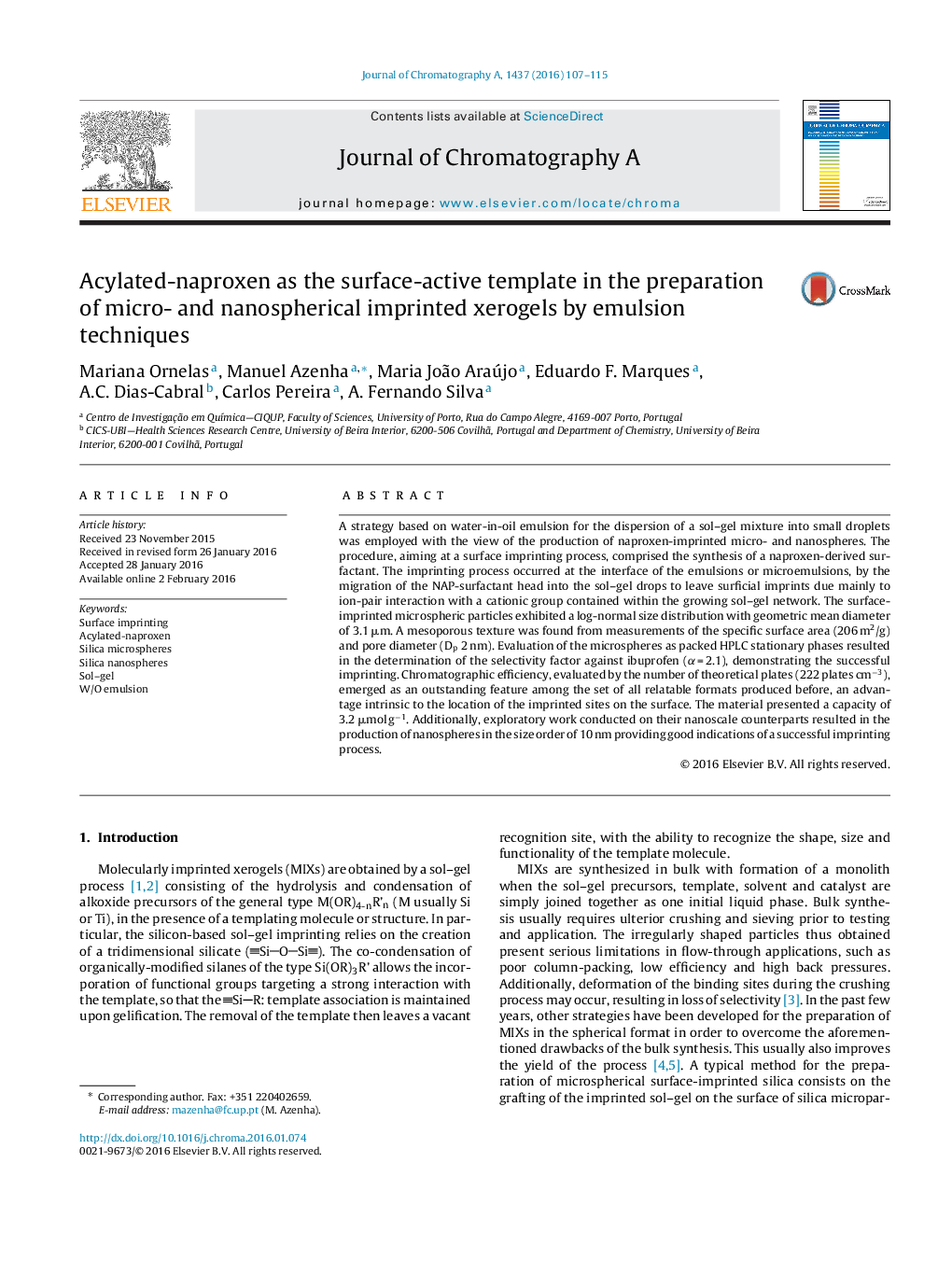| کد مقاله | کد نشریه | سال انتشار | مقاله انگلیسی | نسخه تمام متن |
|---|---|---|---|---|
| 1198898 | 1493489 | 2016 | 9 صفحه PDF | دانلود رایگان |

• Surface-imprinted silica micro- and nanospheres were synthesized by W/O (micro) emulsion.
• The procedure based on templating with a surfactant derivative, by acylation, of naproxen (NAP).
• Successful naproxen (NAP) imprinting was observed for the microspheres (MS).
• NAP templated nanospheres showed good indications of efficient imprinting process.
• NAP-imprinted MS had remarkable dynamical features compared with other sol–gel imprints.
A strategy based on water-in-oil emulsion for the dispersion of a sol–gel mixture into small droplets was employed with the view of the production of naproxen-imprinted micro- and nanospheres. The procedure, aiming at a surface imprinting process, comprised the synthesis of a naproxen-derived surfactant. The imprinting process occurred at the interface of the emulsions or microemulsions, by the migration of the NAP-surfactant head into the sol–gel drops to leave surficial imprints due mainly to ion-pair interaction with a cationic group contained within the growing sol–gel network. The surface-imprinted microspheric particles exhibited a log-normal size distribution with geometric mean diameter of 3.1 μm. A mesoporous texture was found from measurements of the specific surface area (206 m2/g) and pore diameter (Dp 2 nm). Evaluation of the microspheres as packed HPLC stationary phases resulted in the determination of the selectivity factor against ibuprofen (α = 2.1), demonstrating the successful imprinting. Chromatographic efficiency, evaluated by the number of theoretical plates (222 plates cm−3), emerged as an outstanding feature among the set of all relatable formats produced before, an advantage intrinsic to the location of the imprinted sites on the surface. The material presented a capacity of 3.2 μmol g−1. Additionally, exploratory work conducted on their nanoscale counterparts resulted in the production of nanospheres in the size order of 10 nm providing good indications of a successful imprinting process.
Journal: Journal of Chromatography A - Volume 1437, 11 March 2016, Pages 107–115